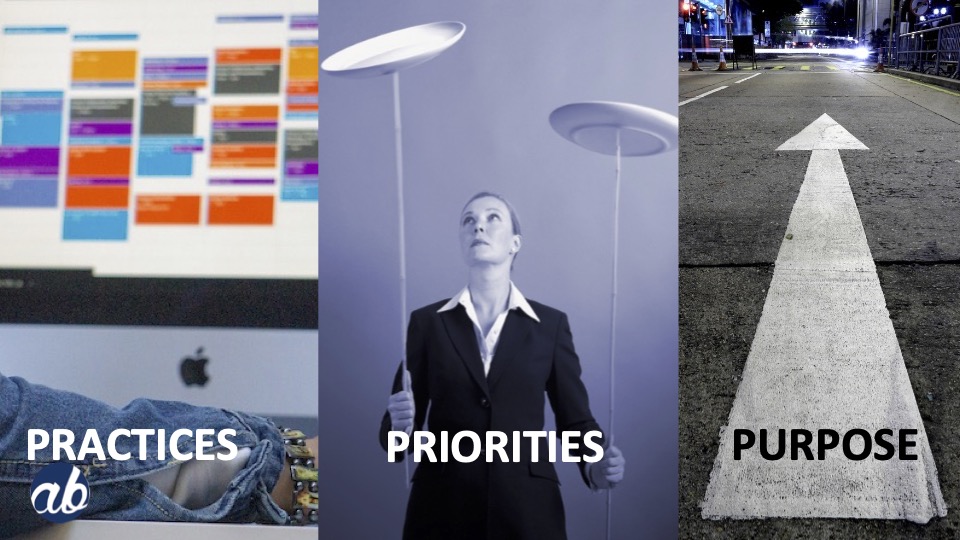Do you ever feel that way about your team? That they seem to be putting in the work, but just not producing the results?
Your team might be fatigued
This is a real thing: it's not just a gut-feel. And there's a reason for it. In "The CFO and agility: How to combat change fatigue", Gartner's VP, Jessica Knight is quoted: "The amount of change that the average employee can absorb without becoming fatigued is half what it was last year. Employees' ability to absorb change has plummeted precisely at the time when more organisations need change to reset." Further, a 2020 Gartner study showed 49% of 499 finance and shared services employees reported low mental energy related to coping with changes.
Getting your finance leadership team to lift
Before you can determine how to lift your team's effort to impact ratio (and even before we've defined what that is), as a CFO you should have clear and succinct answers to the following two questions:
Question 1: What is the IMPACT you need them to have?
In one sentence, what is the impact you need your team to have? When I ask senior finance leaders this question, they typically respond with a list of things they need to deliver. Deliverables alone do not define impact. The most effective way to answer this question is to think of a medium term time horizon that is most relevant to you - say 6 months. Ask yourself, given the objectives for the next 12 months, what is the impact your team needs to have halfway in order to achieve the primary objective at the end of the year?
Here's a scenario:
You might say that the primary objective in 12 months time is to reduce your financial close process by 2 days so they can improve the quality of the analysis prepared for the business each month. Typically, in order for finance teams be efficient enough to shave 2 days off the close, they need effective systems, processes, team capability, cohesion and collaboration.
Given that fact pattern, here is how you might describe their impact:
"I need them to have:
• a full team with the right people in the right roles,
• the ability to tell me with clarity the specific issues that need to be closed out in order to achieve the primary objective (reduce the close by 2 days) and
• the ability to show me that they are working cohesively."
"Succinctly put, I need them to demonstrate to me they can solve problems together."
What is the impact you need your team to have?
On a scale of 1-10, 1 being they are having negligible impact and 10 being they are having maximum impact, how would you rate your team?
Question 2: What is the level of EFFORT they're currently operating at?
This one will be evident to you in various ways:
• they are unresponsive, and never around
• you see them working late: they are at work before you, they leave after you
• you see them emailing or are online in Teams at all hours of the day and night
• they look or sound exhausted
• they appear distracted or disinterested
Effort without impact is a great example of wasted resources. Given that so many finance teams are considered under-resourced (a 2020 KPMG study showed 40 percent of finance leaders said they were not prepared for a transformed 'headcount-lite' environment), you can't waste what you've got.
If you see any of the above in your team, you need to figure out what's going on and what is draining them of their energy. It could be anything - even things outside of your control - but in order to increase their impact to effort ratio, you need to know where they're currently at.
On a scale of 1-10, 1 being no effort, 10 being extreme effort to the point of fatigue, how would you rate your team's level of effort?
What is your team's calculated effort to impact ratio?
To help you navigate around 'what is a 'good' ratio', let me help. This is how I see CFOs describe their team's performance:
• They don't work that hard, and it shows. Low Effort: Low Impact = 2:2
• I don't know what takes them so long. Seems they do so much in the background to produce very little. High effort: Low Impact = 9:4
• They're under the pump. They get a lot done, but they still need to lift. High Effort: Mod-high Impact = 9:8
• They work so hard, but they tend to miss the mark much of the time. High Effort: Moderate Impact = 9:6
• They are nailing it. Mod-high Effort: High Impact = 7-8:10
What does your team need to do to improve their effort to impact ratio?
Prioritise
I see the biggest problem that CFOs face is the disconnect between the big picture strategy and detailed actions. Said another way, it's the disconnect between the purpose (vision and objectives) and the practices (daily actions).
The missing link is a heightened level of attention and focus on priorities.
Do your practices reflect your priorities? Do your priorities align with your purpose?
When we don't prioritise, we inadvertently inject our effort into things that don't have impact.
I was working with a senior finance leader recently who told me that they assess their level of success for the day by the number of unread emails in their inbox which tells me that our people are still driven by emails, performing in a predominantly reactive state and therefore at high risk of yielding to whoever shouts loudest gets the priority.
When our day is driven by emails, we get distracted and we lose focus on what matters. (You might, in fact, be reading this as a distraction to what matters.)
Prioritisation, therefore, is one of the key skills that sits in the Team Leadership, or leverage, quadrant of the CFO Skills of the Future model.
Be productive
In our CFO Boardroom session, the challenge of time naturally came up. In order to be high performing, we need to be highly proactive, which requires a detailed plan and intentional calendar management. After getting through what I was told was 'next level' planning through our dashboards, we had a conversation around how we managed our to-do lists, our calendars and our inbox. The insights we shared are exactly the same ones your team needs in order to increase their efficiency:
1 - maintain one complete to-do list. Your team need to know what is on their plate at any point in time without increasing their cognitive load by trying to remember it all.
2 - ensure your to-do list is reflected in your calendar, i.e. you should be able to perform a reconciliation between the 2.
3 - don't waste time with folders in your inbox. This one, in particular, startled some of our Boardroom, but there were several of us that follow the guidance of Dermot Crowley. He is a master in Outlook, and author of Smart Work which is a brilliant book that shares tactics around how to use the features of Microsoft Outlook more effectively and gain time back. If you use Outlook and you know you and your team aren't optimising its use, be sure to check him out!
Productivity is also one of the key skills that sits in the Team Leadership, or leverage, quadrant of the CFO Skills of the Future model.
Where you come in
Your success is dependent on your team's success.
You lift. They lift. You lift.
Your ability to inspire them to focus on the priorities and be productive without you spoon-feeding them (because quite frankly, that just doubles the work) depends on your capacity for visionary decision making.
Visionary decision making sits in the "Change-leadership" or Impact quadrant of the CFO Skills of the Future model.
Why visionary decision making is hard for CFOs
"In any moment of decision, the best thing you can do is the right thing, the next best thing is the wrong thing and the worst you can do is nothing." - Theodore Roosevelt
Visionary decision making sits at the intersection of CFO thinking and CFO talking. Sound odd? Let's break it down quickly:
CFO thinking comprises deep thinking, broad thinking and future thinking. I've said it before, but CFOs are in a unique position where they need to straddle the past, present and future temporal perspectives at all times and have instant recall in the moment.
CFO talking involves being able to communicate for connection, clarity, change and celebration and be able to lead and influence others around them by first identifying which conversation is needed and then initiating the most appropriate conversation to match the circumstance.
We have 6,200 thoughts and say 150 words1 a minute. That's a lot going on in and of itself simply for CFOs to make decisions.
But it's not only thinking and talking that matters. The ability to make visionary decisions requires a consideration of value.
Linking visionary decision-making to value
Let me give you the simple example of wedding bands. Wedding bands are unique. They can be made with platinum, gold, silver, titanium and they can be adorned with a diamond, ruby, sapphire...the options are endless. When Cody wanted to propose to me, he sought help from a friend of ours who is a jewellery designer. I am generalising, but my understanding is that in the US bigger is better and apparently he had initially chosen something pretty outrageous and quite detailed in design. Have I told you I'm a simple person? Luckily for me, our friend Kat knew that I wasn't up for a monstrous showy thing and Cody proposed to me with the perfect ring...for me. I'm sure others think it's boring.
Lifting your team through visionary decision-making
What is visionary for you might not be visionary for your team. When you exemplifying visionary decision making to drive greater impact in your team, remember it's what they perceive as valuable that will be the hook to lift their performance. Use that to inform your communication strategy - what you choose to tell them, what you leave out.
Your success is dependent on your team's success.
You lift. They lift. You lift.
What is the impact to you when your team's Effort:Impact ratio improves?
1 NeuroWisdom: The new Brain Science of Money, Happiness and Success


